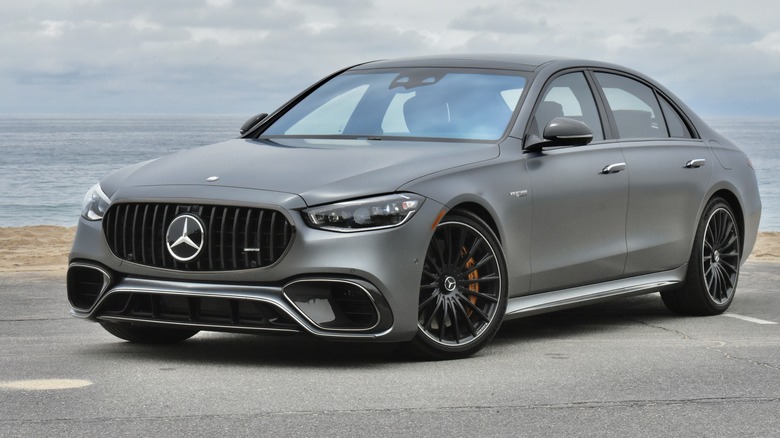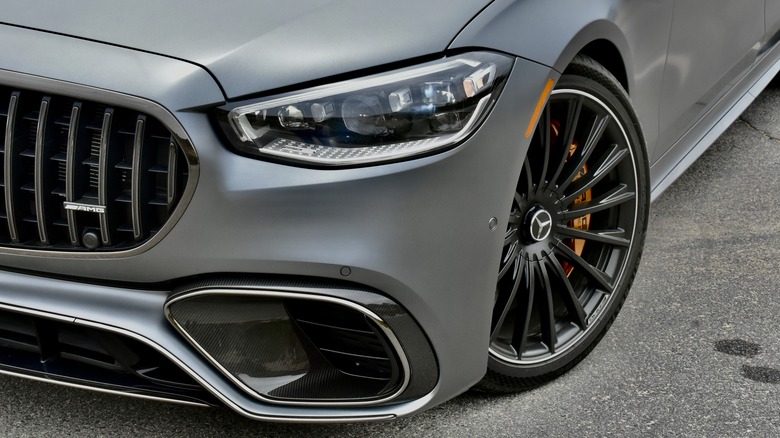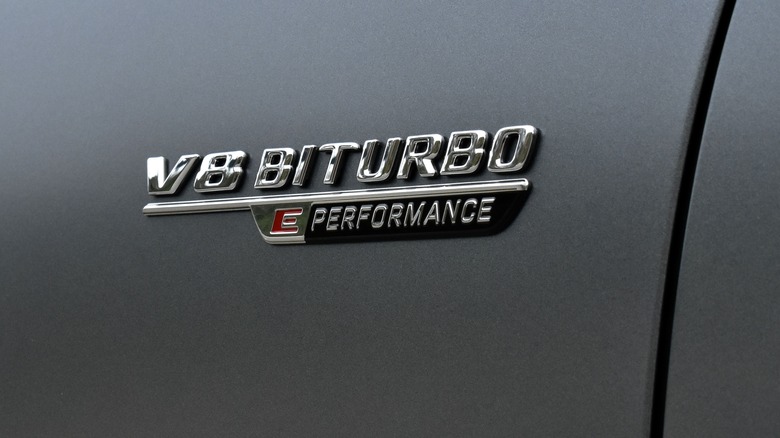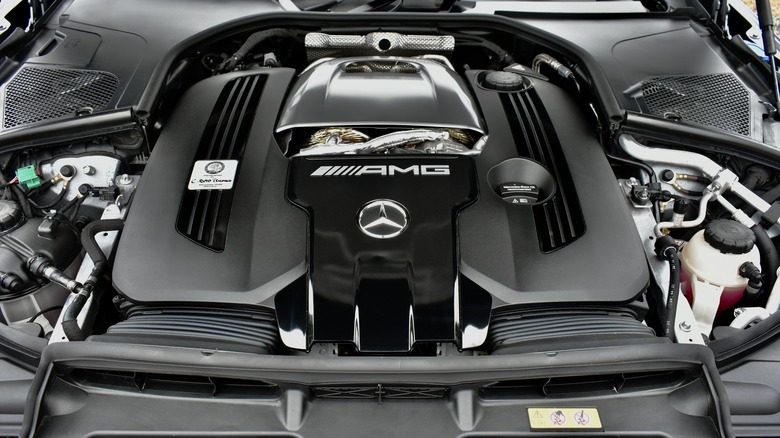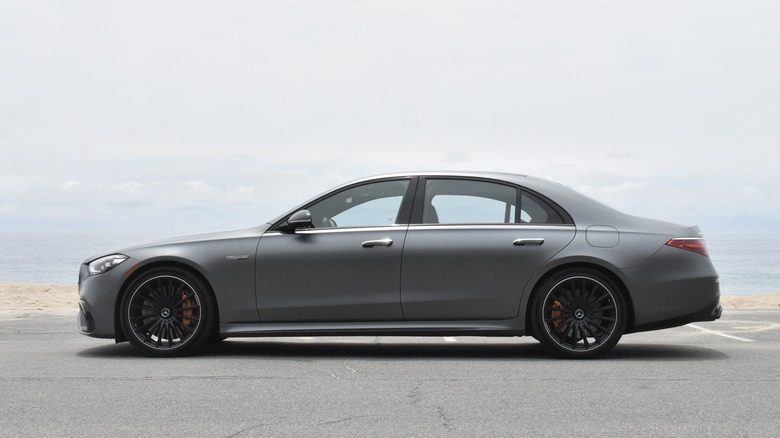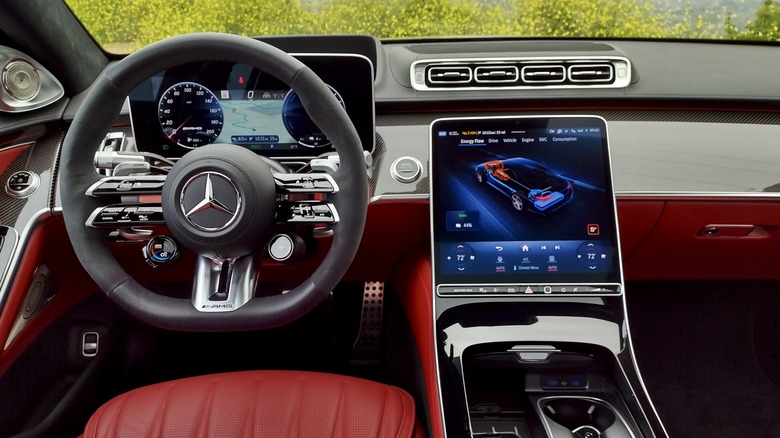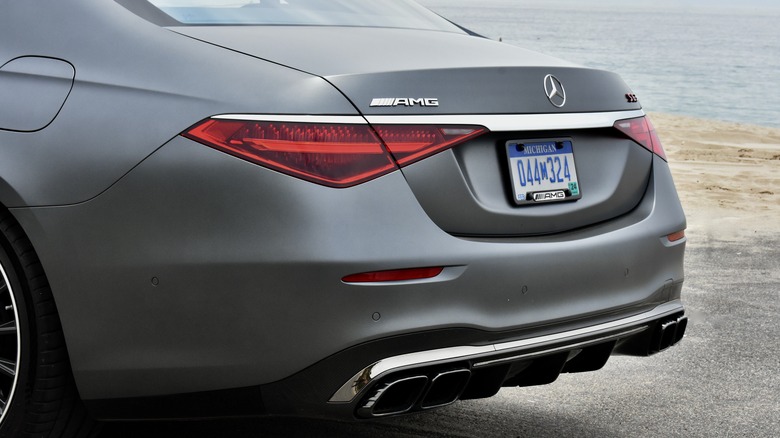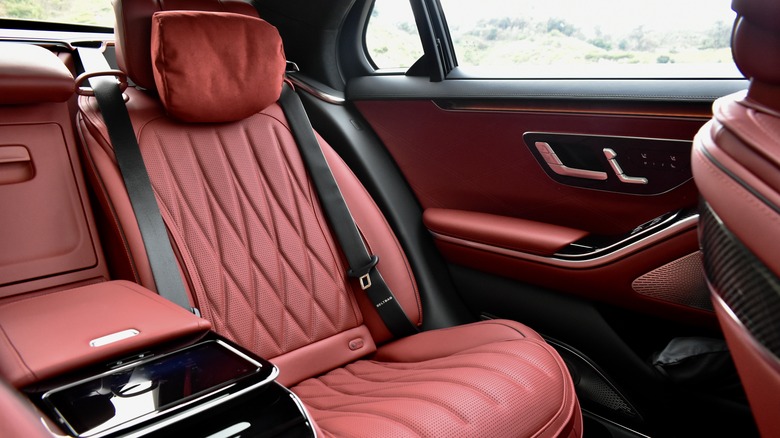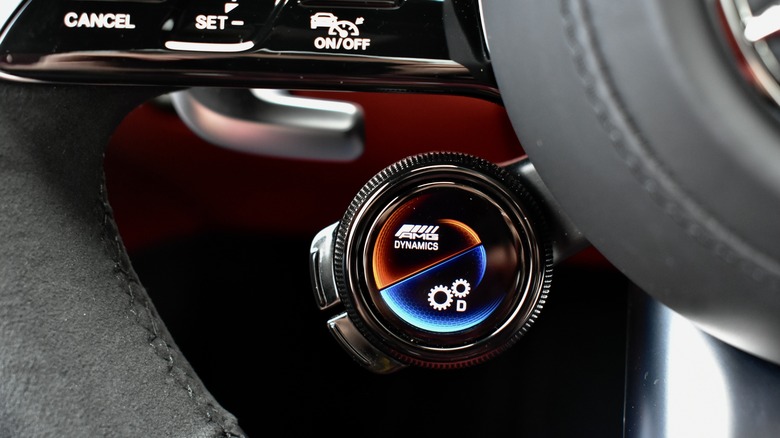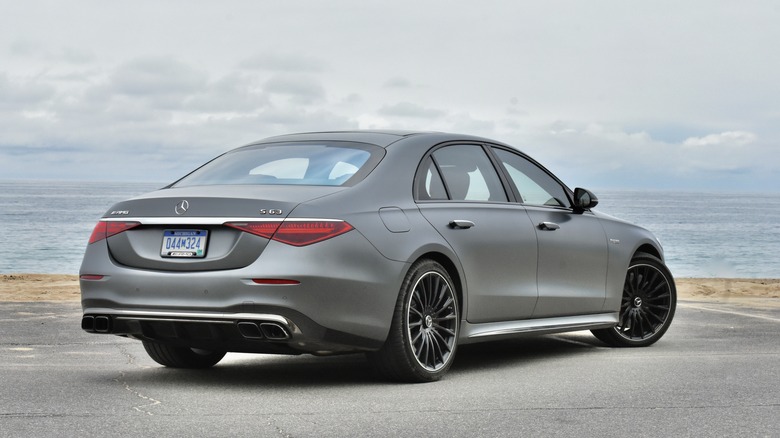2024 Mercedes-AMG S63 E Performance First Drive: Electrifying Tradition
Few things in life are as reliable as Mercedes-Benz's product cadence. The launch of a redesigned Mercedes model is inevitable followed by an AMG performance variant or two. So, with the current-generation Mercedes S-Class having been around since the 2021 model year, it's overdue for the AMG treatment.
This time, though, things are a bit different. The 2024 Mercedes-AMG S63 E Performance is the first AMG S-Class to use a plug-in hybrid powertrain, which is what the "E Performance" portion of its elongated name signifies.
As always, the AMG engineers in Affalterbach, Germany, wanted to make their latest effort more powerful and more capable than the last. But in acknowledgement of stricter emissions standards, that meant supplementing the traditional gasoline V8 with electric power. The result is an intriguing mix of the old and new.
Magic number
The AMG S63 E Performance isn't the first AMG plug-in hybrid (Mercedes has already shown AMG plug-in versions of the GT 4 Door Coupe and C-Class sedan), but it's a bigger reality check because it brings electrification to a cornerstone of Mercedes performance.
Mercedes has a long tradition of big, powerful sedans—one that predates the incorporation of AMG as the automaker's official performance division. It started in 1968 with the 300SEL 6.3, an S-Class predecessor that swapped the then-standard six-cylinder engine for a 6.3-liter V8 from the larger Mercedes-Benz 600. In 1971, AMG, still an independent tuning company at the time, converted one into a race car dubbed the "Red Pig."
The number 63 thus attained special significance in Mercedes-AMG lore, although no production model has been powered by a genuine 6.3-liter engine for some time. Mercedes brought back the "63" badge in the early 2000s for AMG models powered by a naturally-aspirated 6.2-liter V8, which was gradually phased out in favor of a more emissions-friendly 4.0-liter twin-turbocharged V8. The number on the badge remained unchanged, though, and still does.
A powertrain that revels in complexity
That V8 remains the foundation of the AMG S63 E Performance's plug-in hybrid powertrain which, in true S-Class tradition, is staggeringly complicated. As before, the V8's pair of twin-scroll turbochargers are nestled between the cylinder banks in a Hot-V arrangement. This shortens the plumbing to and from the turbos, improving response. In this application, a belt-driven starter generator runs the accessories and enables a more aggressive engine start-stop system to save a bit of fuel.
The gasoline engine is connected to a nine-speed automatic transmission and all-wheel drive system. The electric motor sits at the back and gets its own two-speed transmission, as well as a limited-slip differential. AMG opted for the two-speed gearbox to improve performance at higher speeds, and while the electric motor generally powers the rear wheels only, electric all-wheel drive is also possible if the rear wheels lose traction.
The V8 produces the same 603 horsepower and 664 pound-feet of torque as the previous-generation non-hybrid S63. Add in the electric motor's contribution and you get 791 hp and 1,055 lb-ft of torque. The Mercedes-quoted zero to 60 mph time is a similarly impressive 3.2 seconds, while the top speed is electronically limited to 155 mph.
Still a true plug-in hybrid
Electricity is supplied to the motor by a 13.1-kilowatt-hour battery pack mounted under the trunk floor. AMG claims this configuration helps improve weight distribution, as it puts more weight over the rear wheels. Weight savings isn't really an option in a car like this (Mercedes doesn't quote a curb weight, but other S-Class models weigh in at around 4,700 pounds), so evenly distributing pounds is the best-case scenario.
The pack is made up of 1,200 cylindrical battery cells. Also used in Tesla and Lucid EVs, the cylindrical format allows for direct liquid cooling of the individual cells, Mercedes noted, allowing for more even distribution of coolant that allows the pack to better cope with the rapid charge and discharge cycles of a performance plug-in hybrid. The cell chemistry is also derived from Mercedes' Formula One hybrid batteries, and is the same used in the AMG One supercar.
Official EPA range ratings weren't available at the time of publication, but the S63's electric mode seemed fairly usable in real-world driving. Unlike some plug-in hybrids, you have to press the accelerator pedal pretty hard to trigger an engine start, so it's possible to maintain all-electric driving without becoming a rolling roadblock.
When the battery was depleted, a combination of the highest regenerative braking setting (out of four, including an "off" option) and the sportiest driving mode got some charge back fairly quickly by using the engine as a 4.0-liter twin-turbo generator. The included 3.7-kilowatt AC onboard charger is likely the more climate-friendly charging option, although Mercedes won't say how a long a full charge takes.
Hard-working suspension
As is traditional for AMG, the styling differences between the S63 and a standard S-Class are fairly subtle, encompassing bigger front air intakes and exhaust outlets. Also of note is the grille, which features the Mercedes logo against a background of vertical bars. It's familiar from other AMG models, but has never been used on an S-Class before. So owners might have to explain that, no, it's not an aftermarket addition.
More substantive upgrades include a stiffer body shell, AMG-specific brakes, and a complex array of chassis tech. Standard adaptive air suspension is teamed with an electromechanical anti-roll system, which can decouple the anti-roll bars during less-aggressive driving to improve ride quality. This way, if one wheel hits a bump, the force won't be transferred to the opposite side. Anti-roll bars automatically re-engage and stiffen up when needed to minimize body roll.
Rear-axle steering is also standard, although it's mostly noticeable only at lower speeds, when the rear wheels turn in the opposite direction of the fronts (at up to 2.5 degrees), which makes parking-lot maneuvers easier. The rear wheels track in the same direction as the front wheels at higher speed,s to increase stability.
A multi-talented luxury sedan
Chassis settings, along with engine and transmission response, steering weight, and sound, are keyed to seven drive modes. These include Electric, Battery Hold, Comfort, Sport, Sport+, Slippery, and Individual. Electric activates all-electric driving, Battery Hold saves the charge for later, Slippery is for white-knuckle situations, and Individual allows you to mix and match settings. That leaves Comfort, Sport, and Sport+ as the modes that reveal this car's true character.
Comfort mode provides the full S-Class land yacht experience. The engine is on but not fully awake, so ambient noise remains fairly low. The ride is at its plushest. Motoring down California's Pacific Coast Highway, our test car's carbon-fiber interior trim and AMG badging were the only indicators that we were in an AMG model.
Switch to Sport mode, and you get a subtle burble to remind you that there is in fact a V8 under the hood. As with many other performance cars with programmable drive modes, the steering becomes unnecessarily heavy, but still allows for a fine level of control—which you'll definitely need to aim a car of this size down a twisty road.
In Sport mode, the S63 no longer feels like an ordinary S-Class. Nor does it just feel like a big car with a powerful engine. It has the confidence-inspiring poise of a true sports sedan, one that impresses not only with its ability to move its considerable girth around corners, but also makes the experience enjoyable. Cars that rely this heavily on tech to overcome the laws of physics can be quite dull, but this is definitely one that makes you want to take the long way home. And that's before shifting to Sport+ mode, which offers more of everything without making the car too uncomfortable for long stints.
Soundtrack needs a remix
There's another component of the driving experience where the competing demands of refinement and involvement don't overlap as gracefully, however. If you're going to launch a new V8-powered sedan in 2023, the driver should really be able to hear that classic V8 serenade. Even with turbos muffling the exhaust somewhat, the AMG V8 sounds great in other cars, but it's just too muted here.
An engine too polite to intrude on the driver's audiobook listening wouldn't be so bad, but Mercedes chose to fill some of that silence with the same artificial noises it uses in its EVs, which sound like the moaning of a depressed robot. Because plug-in hybrids are now required to make pedestrian-warning sounds, the same noises also play to bystanders. That will certainly be disappointing to any car enthusiasts left in the S63's artificially-accompanied wake.
Keeps the best parts of the S-Class cabin
Whether you're stuck in traffic or making the most of the S63's handling talents, you're still ensconced in the same lovely cabin as a standard S-Class. Even after a few years on sale (and replication in other Mercedes models) the design still seems fresh. The digital instrument cluster and central touchscreen are well integrated, standing up from the dashboard without sticking out. Their black surfaces are also nicely repeated in the seat-adjustment control panels on the doors.
This being an S-Class, the front seats get heating, ventilation, and massage functions. The AMG treatment also adds active side bolsters, which automatically close to hold occupants in place during hard cornering. It's a logical solution, in line with the S63's mild/wild dichotomy, but the seats' clenching and unclenching of your midsection is still an odd sensation.
Also specific to the AMG model is the steering wheel, which has a design that carriers over from the performance division's other models, but thankfully in a smaller size. Buttons and knobs in the lower quadrants control the drive modes, dampers, and activate the transmission's manual shifting mode (actual shifts are done with conventional paddles). You'll want to familiarize yourself with all of this before setting off, however, lest you twist the wrong knob or press the wrong tab and get the settings all messed up.
Don't forget the screens
In-car tech carries over from other S-Class models as well. The aforementioned instrument cluster and touchscreen measure 12.3 inches and 12.8 inches, respectively. Expected features like natural language voice recognition, wireless Apple CarPlay/Android Auto connectivity and wireless device charging are included as well, while the Dolby Atmos-enabled audio system will be wasted on your normal SiriusXM fare.
Both the touchscreen and instrument cluster have graphics appropriate to their sizes and the car's price, with the instrument cluster adding a neat 3D-effect. As in other current Mercedes models, the touchscreen layout is based on a "Zero Layer" concept that eliminates most menus, placing most functions on the screen at once.
Navigate off the main screen, and you'll also find wonderfully geeky displays that show how the powertrain is utilizing gasoline and electricity, the movement of the dampers, and amount of horsepower and torque you're using (as it turns out, most of the time, not much).
A car of two eras
The AMG S63 E Performance tries to square Mercedes' future with its past. Mercedes aspires to go all-electric in at least some markets by the end of the decade, and has already introduced some all-electric AMG models. But the automaker has been making big, luxurious, and astonishingly complex cars like the S-Class for decade, so they're very much a core part of its identity.
From its V8 engine to its all-boxes-checked approach to engineering, the S63 is peak S-Class. But it still offers enough electric-driving capability to at least get customers used to the idea of an EV if, in the near future, there are no more gasoline S-Classes left at their local showroom. This is a car that paves the way for an electric future while trying to give the internal-combustion past a proper sendoff. No car embodies the current moment quite like it.
